Magic The Gathering’s Innistrad: Crimson Vow Draft Archetypes Explained
Table of Contents
Head to your prerelease knowing exactly how to draft in this guide to Innistrad: Crimson Vow’s limited format.
You Are Reading :Magic The Gatherings Innistrad Crimson Vow Draft Archetypes Explained
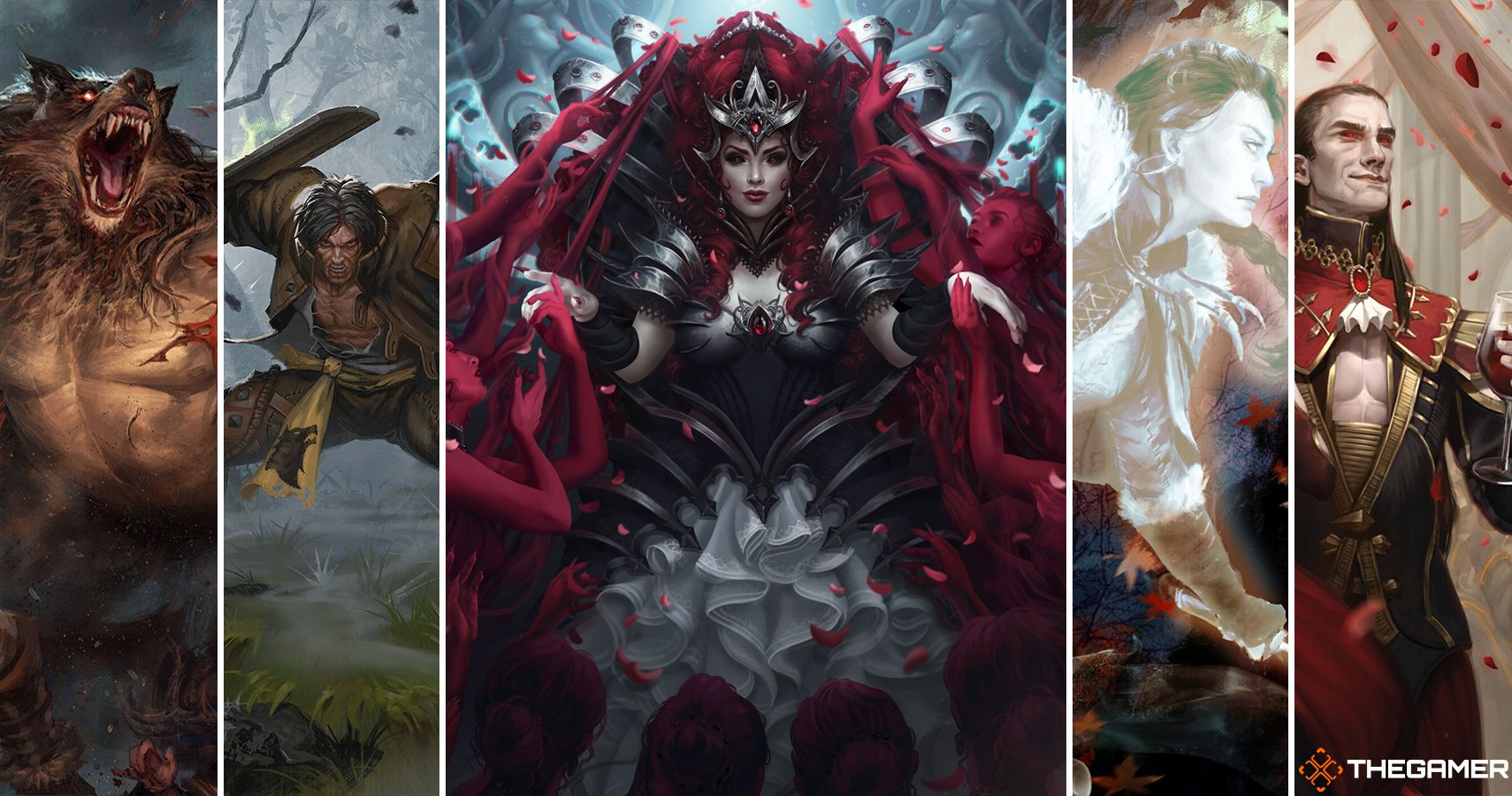
Quick Links
For the last Magic the Gathering set of 2021, we’re staying in the plane of Innistrad with Innistrad: Crimson Vow. The story is following directly from September’s Innistrad: Midnight Hunt – the werewolves and vampires have succeeded in their goal of bringing about an endless night, and the vampire matriarch Olivia Voldaren has stolen the one artifact that could bring back the day: the Moonsilver Key. Now it’s up to the planeswalkers Chandra, Kaya, Arlinn, and Teferi to infiltrate Voldaren’s wedding to the grandfather of all vampires, Edgar Markov, and try and recover the key before it’s too late.
Despite being a return trip heavily linked to Midnight Hunt, Crimson Vow has its own mechanics and quirks that make it different enough to change up your drafting strategy. So when you go to your local prerelease and get faced with your pick one, pack one, it’s good to know which way you want to go. Here are Innistrad: Crimson Vow’s draft archetypes.
White/Blue: Disturb Auras
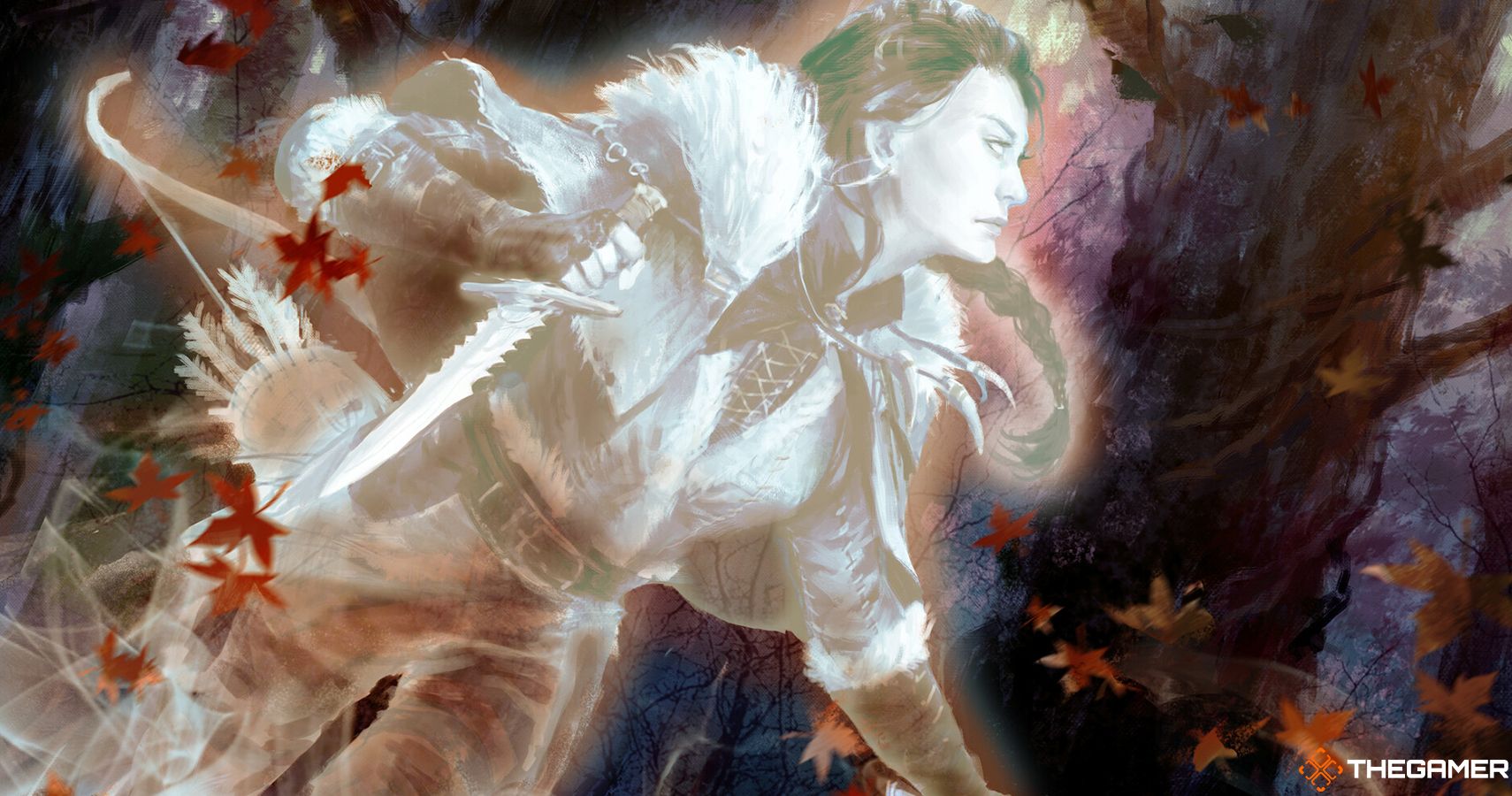
Spirits were also the white/blue tribe of Midnight Hunt, and Disturb of one of two mechanics to make a comeback from it, but Crimson Vow’s spirits work very differently.
Instead of having a living creature on one side of the card and having it transform into a spirit on the other, this time the spirits are on the front, and on the back are a selection of Aura Enchantments that you can cast from your graveyard.
For example, Kindle Ancestor starts as a 2/3 Spirit with Lifelink, and then, when it ‘dies’, it can be Disturbed from your graveyard for one generic and one white to become Ancestor’s Embrace, an Aura enchantment that gives another creature Lifelink. Another terrifying card is Faithbound Judge, who begins as a simple 4/4 flying, vigilant defender that can eventually attack (maybe not so simple…), but then Disturbs into Sinner’s Judgement, an enchantment that forces an opponent to lose the game.
More than just Disturb Spirits, though, there are lots of cards that encourage you to either cast a lot of enchantments or stack them all onto one creature. For example, Dawnhart Geist gives you two life whenever you cast an enchantment, and Stormchaser Drake draws a card whenever it becomes the target of a spell. Brine Comber makes a 1/1 white Spirit with flying whenever it becomes the target of an Aura spell, before enchanting another creature with that ability when it disturbs into Brinebound Gift.
Blue/Black: Exploit Zombies
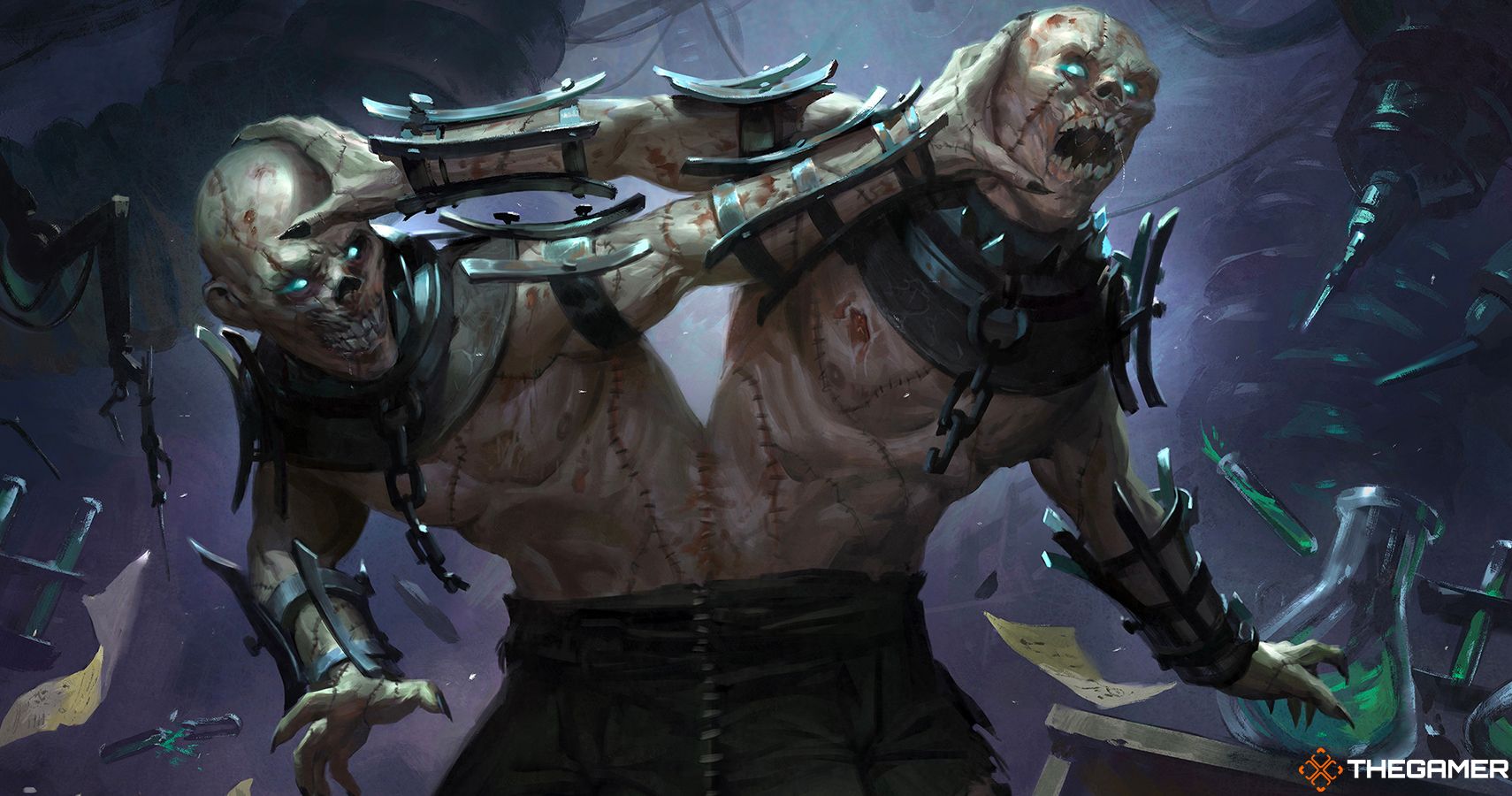
If there’s one thing Innistrad sets love more than zombies, it’s finding new ways to kill them for profit. Exploit is a mechanic last seen in Standard back in the Dragons of Tarkir days that lets you sacrifice a creature for benefit when something with Exploit enters the battlefield.
The whole strategy of this archetype is to make a lot of zombies ready to be exploited when bigger, scarier creatures enter. There are lots of ways to make zombies, like Dying to Serve, a two generic and one black enchantment that makes a 2/2 black Zombie once a turn whenever you discard a card, or the fantastic Necroduality, which makes a token copy of any nontoken Zombie that enters the battlefield under your control.
Creatures who can do the exploiting include the counterspell-on-lets Overcharged Amalgam, Fell Stinger who can draw two cards, Planeswalker removal with Graf Reaver, and Driver Skaab being able to put creatures on the top or bottom of their owner’s library. One of the best cards in this archetype, though, is Skull Skaab, who triggers whenever any creature exploits a nontoken creature.
Black/Red: Blood Token Vampires
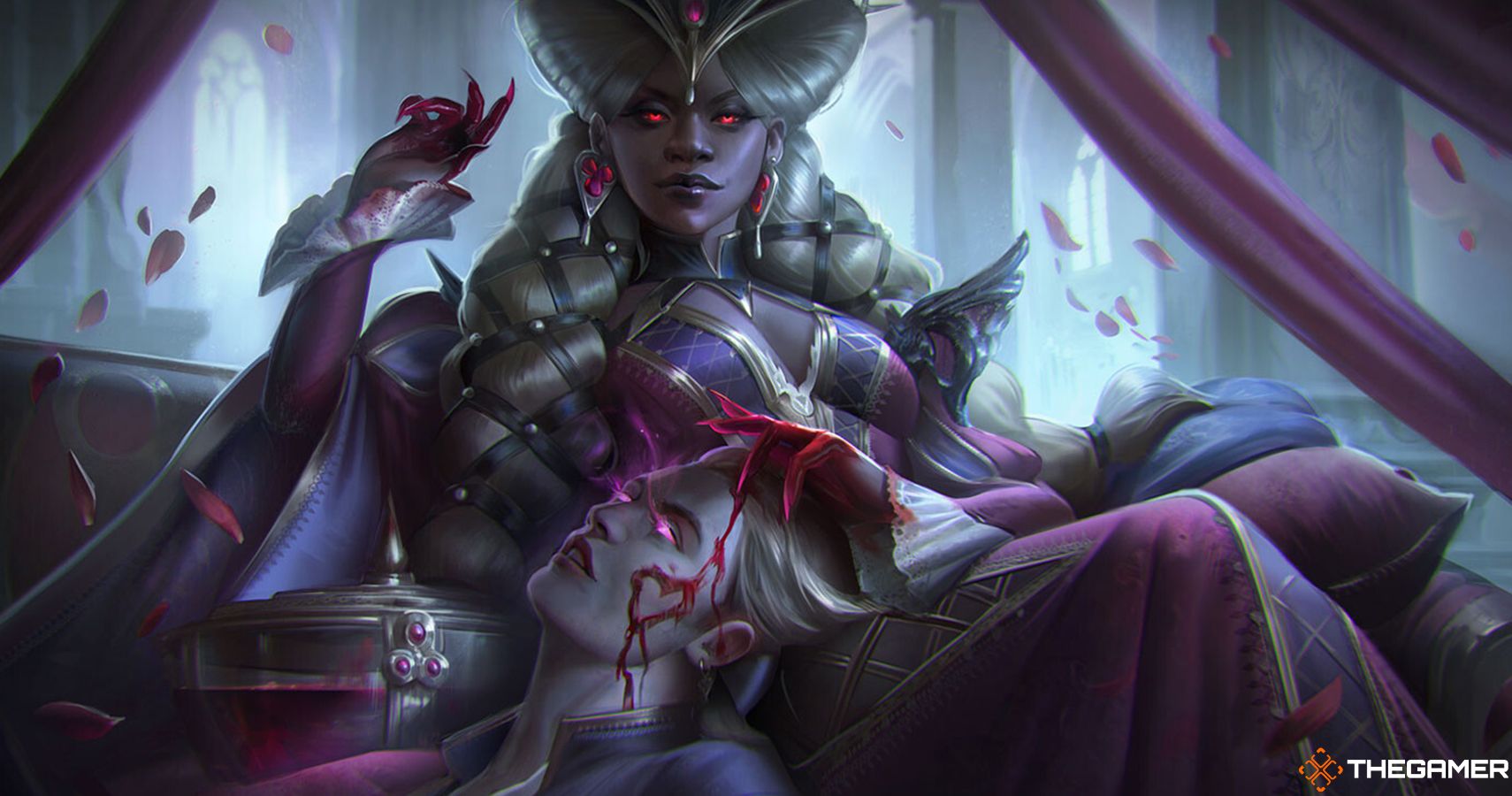
Blood is the new artifact token introduced in Crimson Vow, joining the likes of gold, treasure, food, and clues. When you pay one generic mana, discard a card, and tap and sacrifice a Blood token, you can draw a card. It might sound bad, but don’t forget Innistrad sets love it when you put cards in your graveyard.
This is a vampire wedding, though, which means there are a ton of bloodthirsty vampires ready to make blood and use it in interesting and unconventional ways. Voldaren Bloodcaster makes blood whenever a nontoken creature you control dies, Restless Bloodseeker makes blood if you gained life this turn, and Belligerent Guest can make them by dealing combat damage to a player.
With so many ways to make blood, there need to be lots of ways to use them up as well. Alongside the intended use of getting to draw a card, you can sacrifice them to put +1/+1 counters on Wedding Security, Anje Maid of Dishonor can force your opponent to lose life and you gain life, and Blood Hypnotise can use them to make a creature unable to block this turn.
One of the most interesting cards for blood vampires is Bloodvial Purveyor. It makes blood tokens for your opponents, but then gets bigger when it attacks for each blood token your opponent controls. Forcing your opponent to either find ways to sacrifice their tokens, discard cards from their hand, or face down at least a 6/6 flyer is pretty scary.
Red/Green: Daybound/Nightbound Werewolves
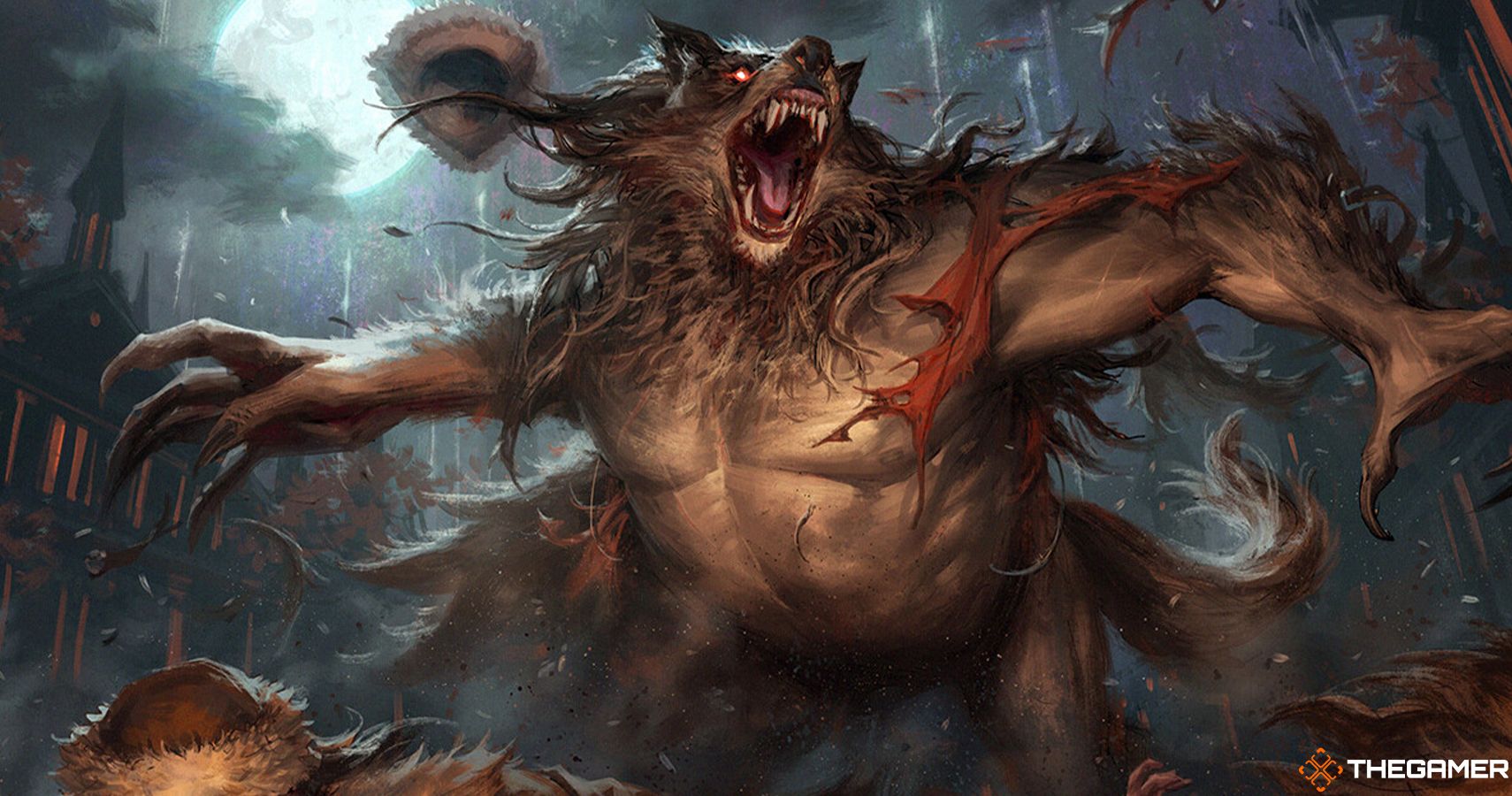
This archetype is probably the closest to how it was in Midnight Hunt, however, it’s been held back slightly by there being no cards outside of the werewolf tribe that care about the board swapping between day and night.
Instead, there’s a bit more wolf and werewolf synergy, with lots of cards rewarding you for having more than one wolf or werewolf on the battlefield. Hungry Ridgewolf, Runebound Wolf, and Packsong Pup all like you to have multiple wolves, whereas Kessig Wolfrider, Infestation Expert//Infested Werewolf, and Child of the Pack can easily make more of them if needed.
Though not quite as baked-in to the archetype, there are a few really good wolves making their debut in this set as well. Cemetery Prowler exiles cards from your graveyard to reduce the cost of casting other spells with a share type, and Ascendant Packleader gets bigger the more expensive spells you cast.
This archetype seems to be the one that might struggle the most in Crimson Vow. The lack of day and night support outside of the tribe inherently limits it over Midnight Hunt’s take, and a lot of the red wolves just don’t seem that useful. In draft, they could serve the job enough, but you may also want to hold off drafting werewolves until January’s Innistrad: Double Feature, which puts Crimson Vow and Midnight Hunt together in one drafting experience.
Green/White: Training Humans
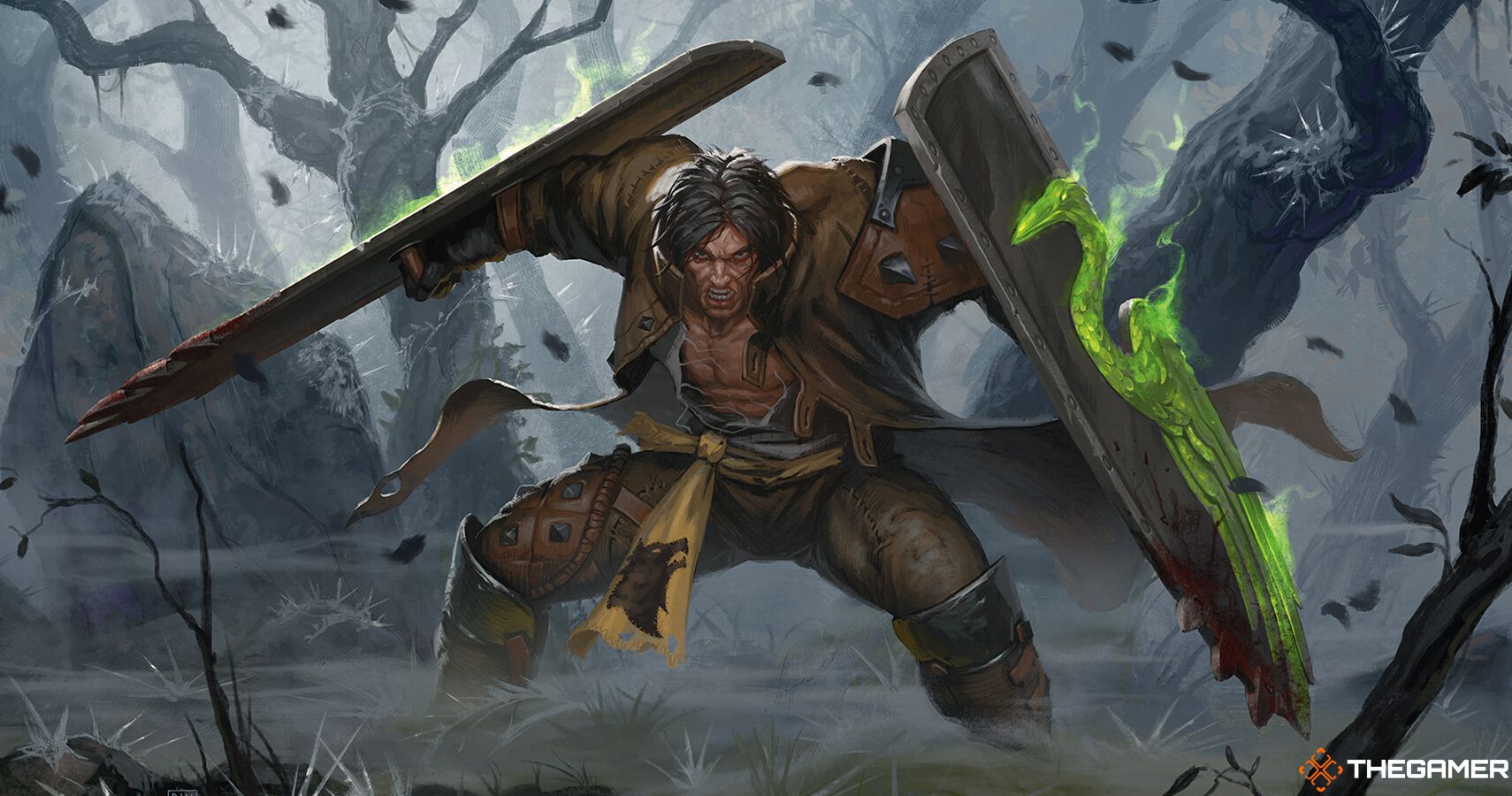
The last new mechanic for Crimson Vow is Training, which puts +1/+1 counters on creatures if they’re attacking alongside something with higher power.
The humans of Innistrad are facing one of their biggest threats ever, the Endless Night that allows monsters to prey upon them whenever they please, and so with this tribe, you need to go wide with a large number of creature tokens before growing your creatures through +1/+1 counters.
A lot of strategies rely on you having creatures with +1/+1 counters on them, and so Training is key to the archetype. Savior of Ollenbock, Apprentice Sharpshooter, Optimistic Initiate, and Cloaked Cadet all rack up the counters with Training. There’s also the incredible Hamlet Vanguard, who enters with double the amount of +1/+1 counters as nontoken humans you control, and Angelic Quartermaster, an Angel that puts +1/+1 counters on two creatures you control.
Counters are great on their own, but Crimson Vow also has lots of ways of using them. Ollenbock Escort can sacrifice itself to give a creature with a counter on it indestructible and lifelink until the end of the turn, Cloaked Cadet draws a card once a turn if you’ve put a counter on a human, and Sigardian Paladin gains trample and lifelink if you’ve put a counter on a creature this turn.
One of the strongest and most direct win conditions in the entire format so far is Sigarda’s Summons, which gives creatures with +1/+1 counters on them flying, base power and toughness of 4/4, and turns them into Angels. Having a load of 1/1 humans with counters on them turn into 4/4 flyers with counters on them can easily win the game.
White/Black: Lifegain
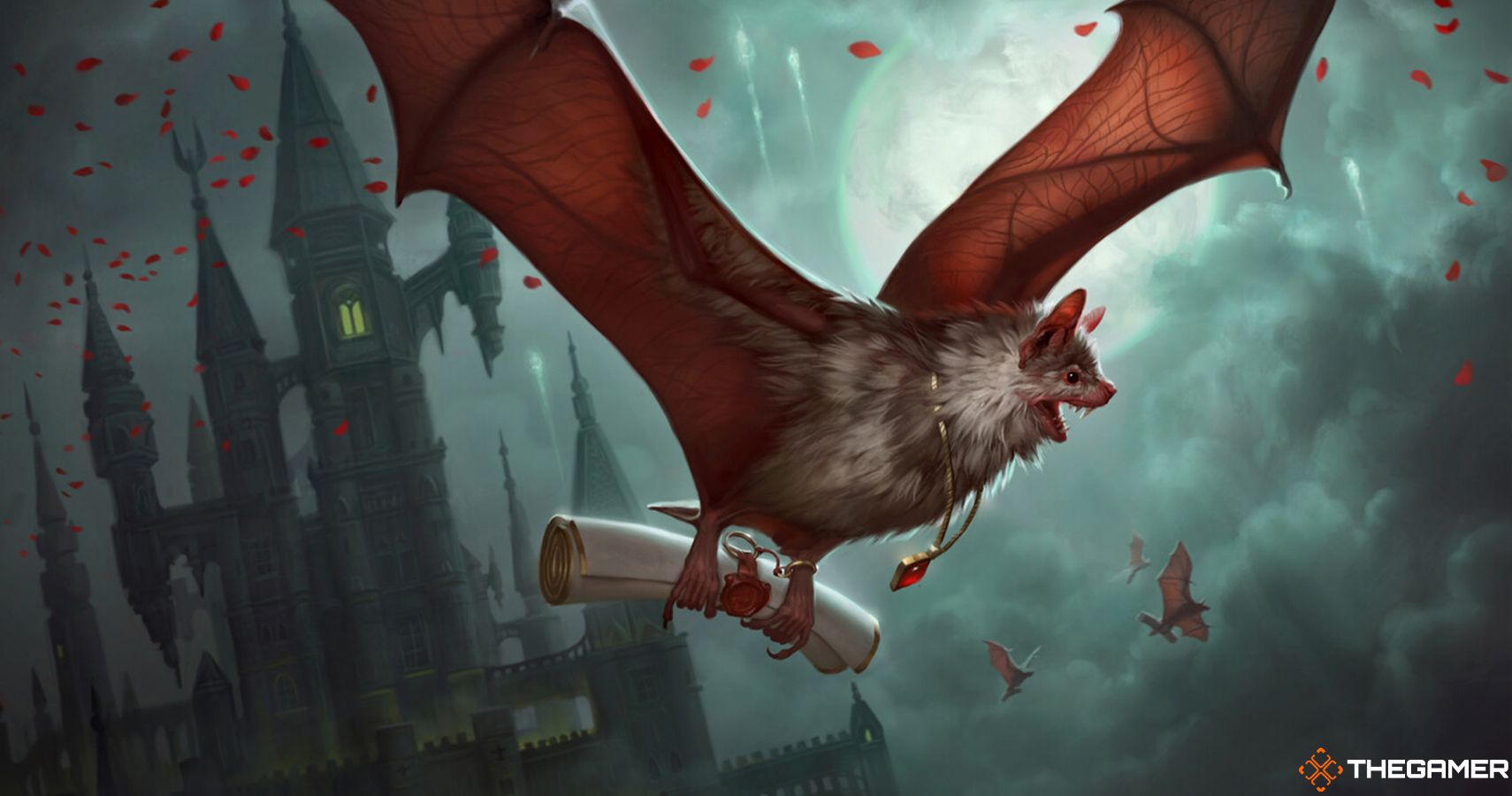
Orzhov Lifegain isn’t exactly a new way to play black and white, but it’s a tried and tested strategy that Crimson Vow refreshes with some exciting new cards.
To gain life, we have Kindly Ancestor//Ancestor’s Embrace, Heron of Hope, Katilda Dawnhart Martyr, and Sorin the Mirthless, who all either have lifelink, can make lifelinkers, or give something else lifelink. Heron of Hope in particular is a great common card, as it pushes your life gain a little bit further. Gluttonous Geist also works well if you’re making a few blood tokens, as she gains you one life whenever you sacrifice one.
Lifegain is also an incidental effect in several cards. Circle of Confinement gives you two life whenever someone casts a vampire with the same name as one you exiled with the Circle of Confinement, Dawnhart Geist gives you life for casting enchantments, and Sanctify gains three life and draws an artifact or enchantment.
More than just gaining life and rushing way ahead of the opposition, Crimson Vow has ways to use the act of gaining life itself as an effect. Restless Bloodseeker makes blood tokens if you’ve gained life that turn, Courier Bat can return a creature from the graveyard to your hand, and Voice of the Blessed gets bigger and scarier as you gain more life, eventually having flying, vigilance, and indestructible.
Blue/Red: Noncreature Spells
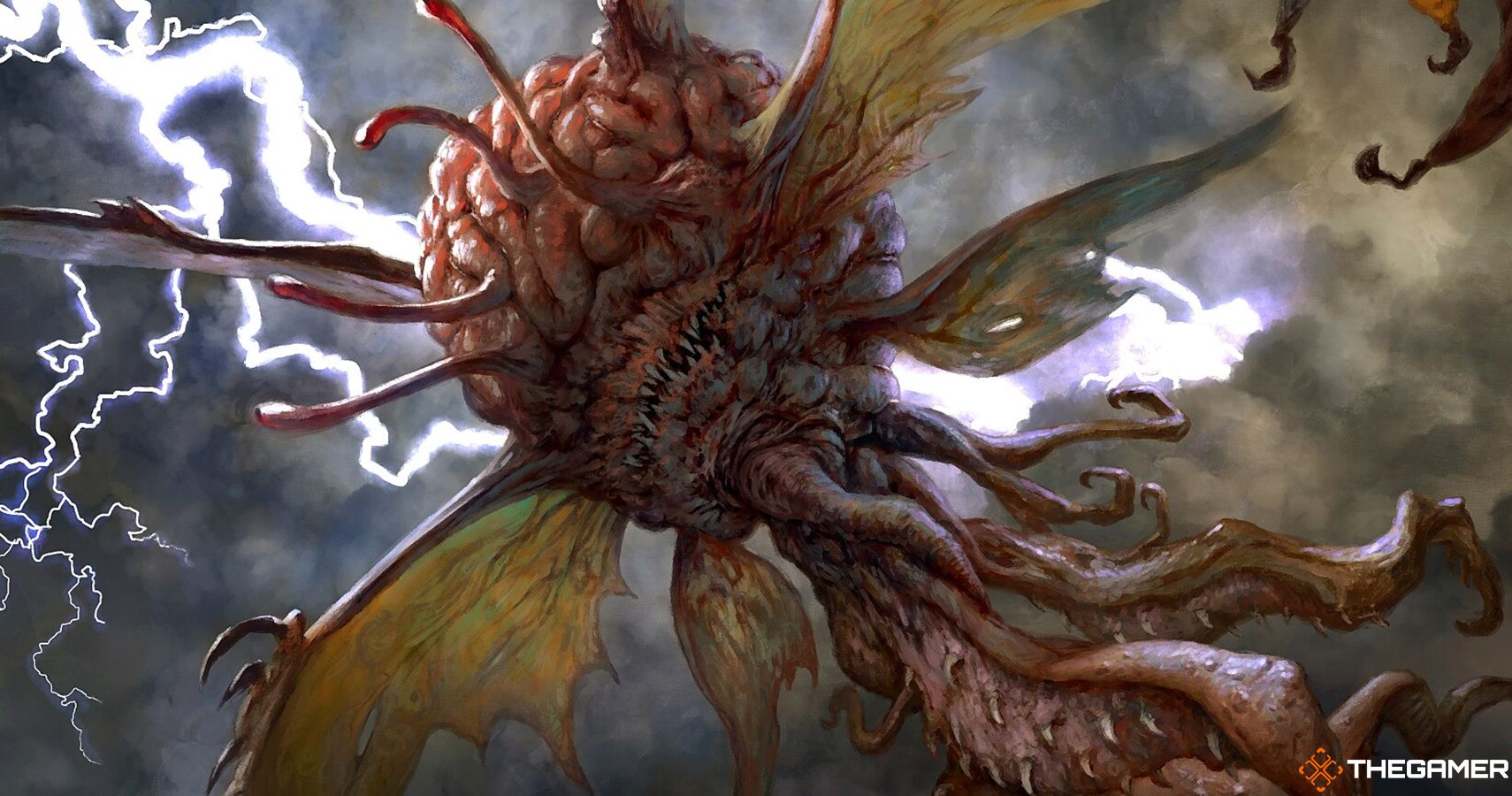
Spellslinger decks are as Izzet as it comes, but Crimson Vow has expanded the archetype beyond just instants and sorceries. Now, you’re rewarded for casting any non-creature spell, including instants, sorceries, artifacts, enchantments, and Planeswalkers. Keep in mind that lands aren’t cast, they’re just put into play.
Whispering Wizard can make a 1/1 white Spirit with flying each turn, as long as you cast a non-creature spell (this also works very nicely in Disturb decks!), Frenzied Devil gets +2/+2 until the end of the turn, and Kessig Flamebreather is a really cool new take on Guttersnipe, dealing one damage to each opponent. One of the best cards is the werewolf Lambholt Raconteur, as they deal one damage to each opponent like Kessig Flamebreather, but then transform into Lambholt Ravager and deal two damage instead.
An absolutely terrifying inclusion in this archetype is Manaform Hellkite. Whenever you cast a non-creature spell, you make a flying dragon illusion with haste, with its power and toughness equal to the mana spent on the spell (meaning it also works with X cost spells!). Even if you have to exile them at the end of the turn, having a huge number of flying, hasty dragons is incredible.
Use some of the set’s cheap instant and sorcery spells to speed things up a bit, like Abrade, Reckless Impulse, Rending Flame, Markov Retribution, Wash Away, Syncopate, Thirst for Discovery and Lunar Rejection. But because this archetype is about non-creatures, there are plenty of artifacts that could fit nicely into it as well. Dollhouse of Horrors, Honeymoon Hearse, Honored Heirloom and Investigator’s Journal are all noncreatures that can give you a huge advantage.
Finally, don’t forget about Wandering Mind, who can filter through the top six cards of your library for a non-creature, nonland, and then put it in your hand and the rest at the bottom of the library.
Black/Green: Toughness Matters
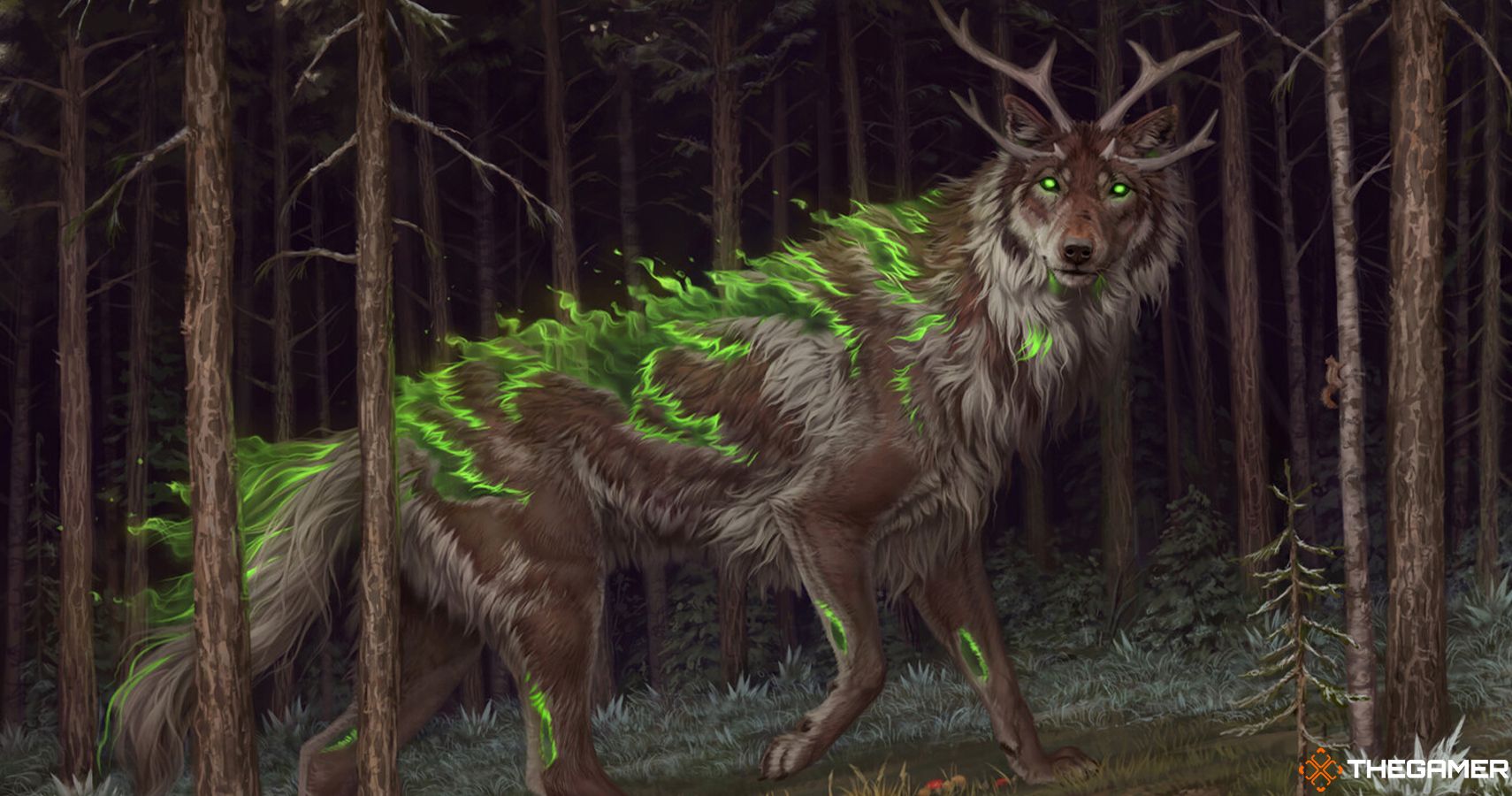
A really interesting new direction to take the Golgari colours is having creatures and effects focus on their toughness rather than their power.
Leading this is Ancient Lumberknot, a treefolk that has creatures use their toughness when assigning combat damage over their power, but only if the toughness is higher. It’s a fantastic card with zero downsides. Flourishing Hunter is another decent card, as it gives you life equal to the highest toughness on a creature you control as it enters the battlefield. Meanwhile, Dormant Grove transforms into Gnarled Grovestrider, a 3/6 with Vigilance, if it uts a +1/+1 counter on a creature with at least five toughness.
It’s not just effects that care about toughness, there are creatures who are absolute units as well. Bloodvial Purveyor, Concealing Curtains, Gluttonous Geist, and Old Rutstein have impressive toughness, but nothing compares to Unhallowed Phalanx, who immediately enters the list of highest toughness in the entirety of Magic’s history, being a whopping 1/13. It’s also the common-rarity creature with the highest toughness.
Red/White: Combat
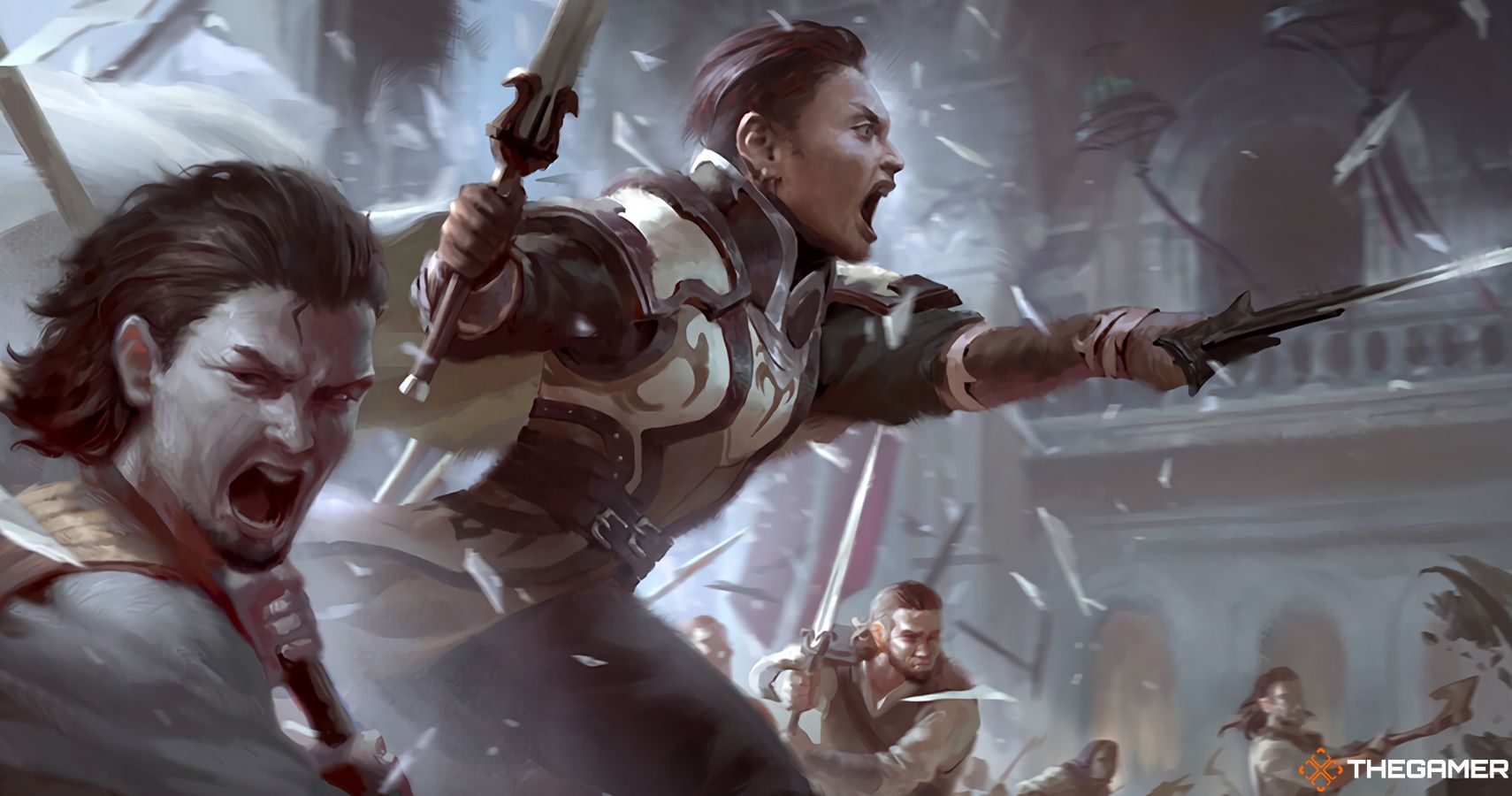
Boros does what Boros does, and what Boros does well is going to combat. Crimson Vow tries to shake up the formula a bit, though, by introducing a subtheme of attacking with more than one creature, over the usual Boros Voltron strategy of having one big one to pierce through defences.
You can use the white Training creatures like Gryff Rider and Optimistic Initiate, or buff creatures up with things like Daybreak Combatants, Hungry Ridgewolf, or Drogskol Armaments. Potential blockers can also be shut down with Blood Hypnotist, and Distracting Geist, to get hits through easier.
Things that care about attacking with more than one creature include the card draw engine Wedding Announcement, which then transforms into Wedding Festivity to give all of your creatures +1/+1, and Alluring Suitor, who transforms into Deadly Dancer when it and exactly two creatures attack, and can buff itself and another creature for two red mana.
Green/Blue: Self-Mill

In Magic terms, ‘milling’ means putting cards from the top of your library directly into your graveyard. Most of the time it’s a bad thing, and mill decks try and get an opponent to put their whole deck into their graveyard and lose. On Innistrad, though, your graveyard is just another resource, and having a graveyard bursting with powerful creatures can be a huge advantage.
To get your graveyard nice and full, use cards like Grolnok the Omnivore, Moldgraf Millipede, Mulch, Screaming Swarm, Scattered Thoughts, Thirst for Discovery, and Inspired Idea. Unfortunately, blood tokens aren’t a thing in blue or green, but if you have the chance to splash into black or red to get some good blood token creation going, it can also be a decent way of dumping things into your graveyard. Splashing into black also allows you to use Old Rutstein, who both self-mills and makes blood tokens.
From there, there are a lot of absurdly powerful things that can be done using your graveyard. One of the most easily abusable ways is with Patchwork Crawler. It can exile a creature from your graveyard to get a +1/+1 counter on Patchwork Crawler, and it inherits the activated abilities of all the creatures exiled with it. That means you could exile something like Howlpack Piper and gain its activated ability of paying one generic, one green and tapping it to put a creature from your hand onto the battlefield.
Vilespawn Spider is also really powerful, as it makes as many 1/1 green insects as there are creatures in your graveyard (and then can be exiled with Patchwork Crawler to do it again). Reclusive Taxidermist and Cemetery Prowler both also directly use your graveyard for their effects.
Another great thing with self-milling in blue is it gives you access to play the Disturb auras without needing to cast the front side first. Having Ghastly Mimicry, Lantern Bearer, or Gutter Shortcut in your graveyard effectively turns it into a second hand full of Auras ready to play.
Link Source : https://www.thegamer.com/magic-the-gatherings-innistrad-crimson-vow-draft-guide/
